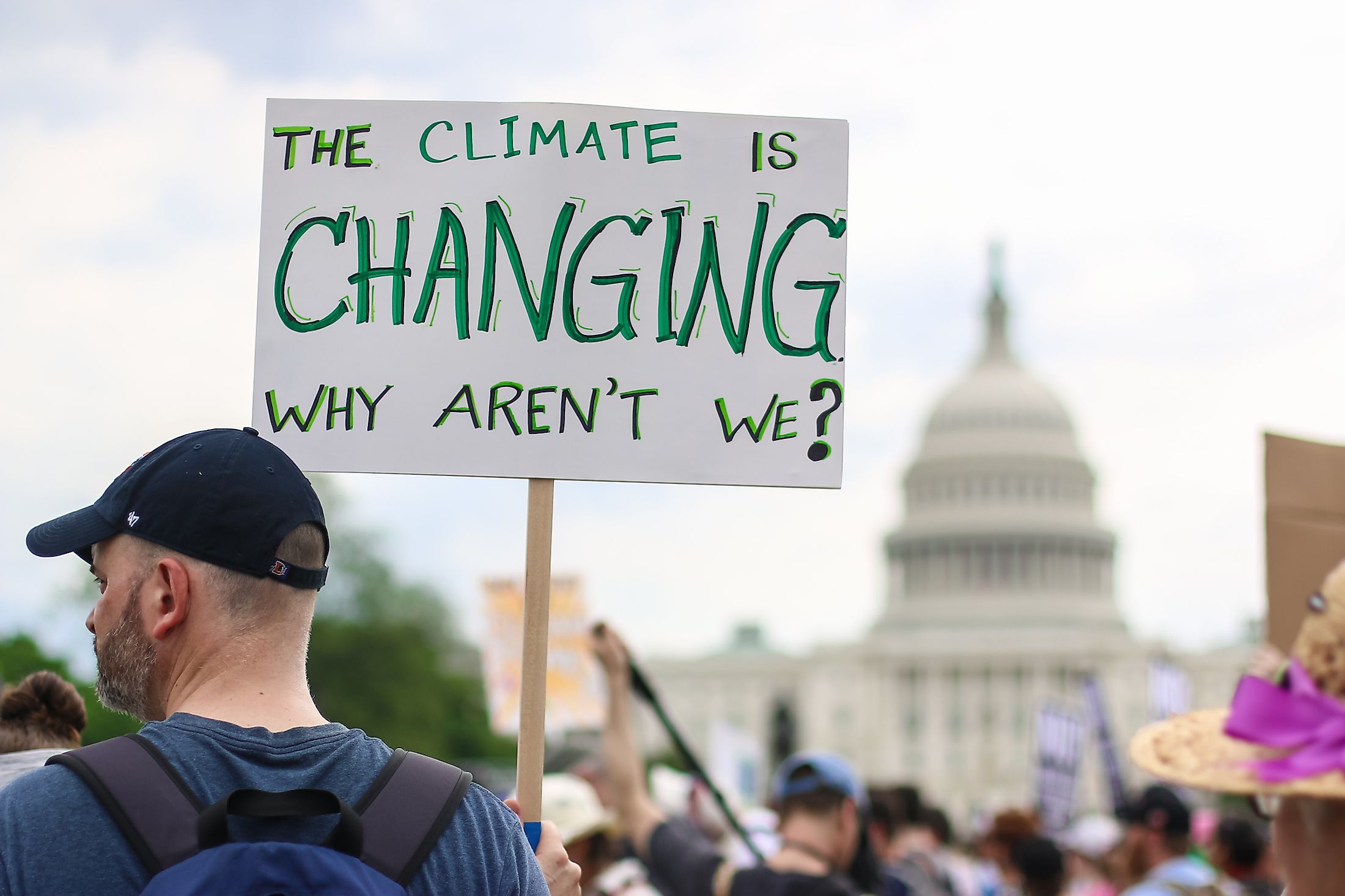
10 Ways Climate Change Will Affect The United States
The most urgent and pressing matter facing the future of humanity is climate change, an issue that has been significantly exacerbated through humanity's callous treatment of the natural world. This is aptly illustrated through a 2021 report by the Intergovernmental Panel on Climate Change, which states that climate change is not only driven by human activities but that it is widespread, rapid, and intensifying at an unforeseen rate. As our planet's climate continues to change as a result of ever-increasing greenhouse emissions, its impacts and repercussions will be felt far and wide. Here are ten ways that climate change will impact the United States in the decades to come considering the current rate of change.
Rising Sea Levels And Coastal Flooding
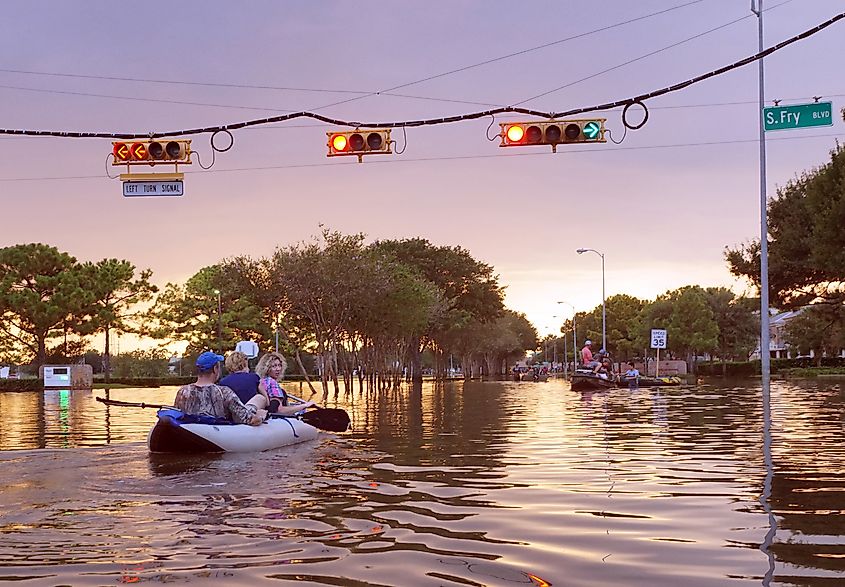
Across 48 of the 50 US states, the average surface temperature has risen at an average of 0.16°F per decade. In fact, temperatures have reached such a new high that eight of the top ten warmest years for these 48 states took place after 1998, with 2012 and 2016 setting the record for the warmest years ever registered. This goes hand in hand with the rest of the world, as the world has witnessed a global average temperature increase of approximately 1.8°F since 1901. In turn, land ice has been melting at an unprecedented rate, which has subsequently resulted in rising sea levels. Since 1880, it is estimated that global sea levels have risen by approximately 8 inches. By 2100, global sea levels are expected to rise by a further one to eight feet as ice melting continues unabated.
By 2020, an average of 134 million people dwelled within cities or counties along the US coastline. These coastal populations are expected to continue increasing within the coming decades. According to a recently published research study, a sea-level rise of 3 feet by 2100 would place an estimated 4.2 million people at risk of coastal flooding, whereas a rise of 6 feet would threaten approximately 13.1 million people. Moreover, the study's results illustrate how the southeastern US would be the most significantly affected region. Among the vulnerable states, Florida's population is most at risk, followed by Georgia's, South Carolina's, and Louisiana's.
Increased Frequency Of Intense Storms
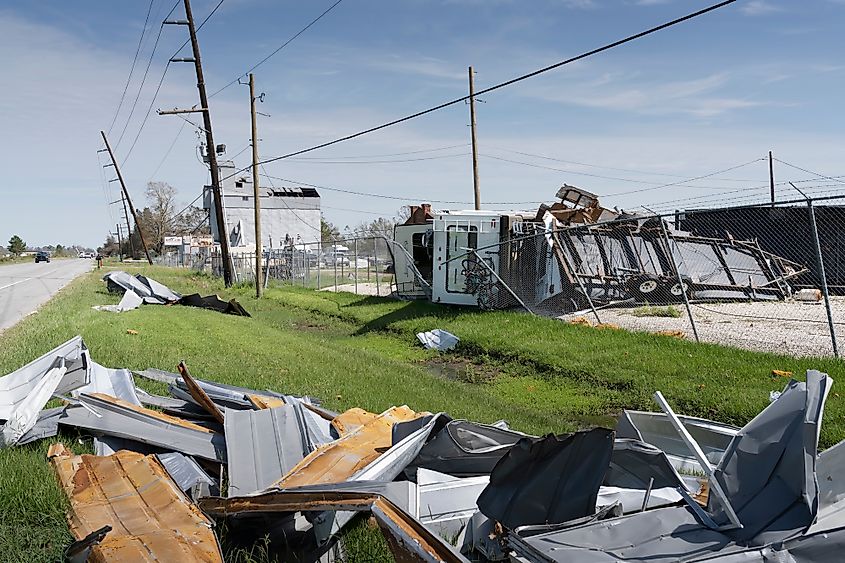
Since the early 1980s, the frequency, duration, and intensity of storms (such as Category 4 and 5 North Atlantic hurricanes) have substantially increased. This increase has been attributed to climate change, whereby warmer air temperatures increase the probability of such storms occurring due to the availability of higher levels of heat energy. As the surface temperature warms, the level of water vapor in the air increases, especially since warmer air is capable of holding more water vapor. The spiraling winds of hurricanes draw moist air towards their center and fuel the associated thunderstorms. Thus, an increased level of water vapor in the air will result in much more severe rainfall during such extreme storms. Such a higher potential of intense storms is supported by various research studies, some of which estimate a storm frequency increase of 23% by the end of the 21st century within the Atlantic basin alone.
Intensified Droughts And Heat Waves
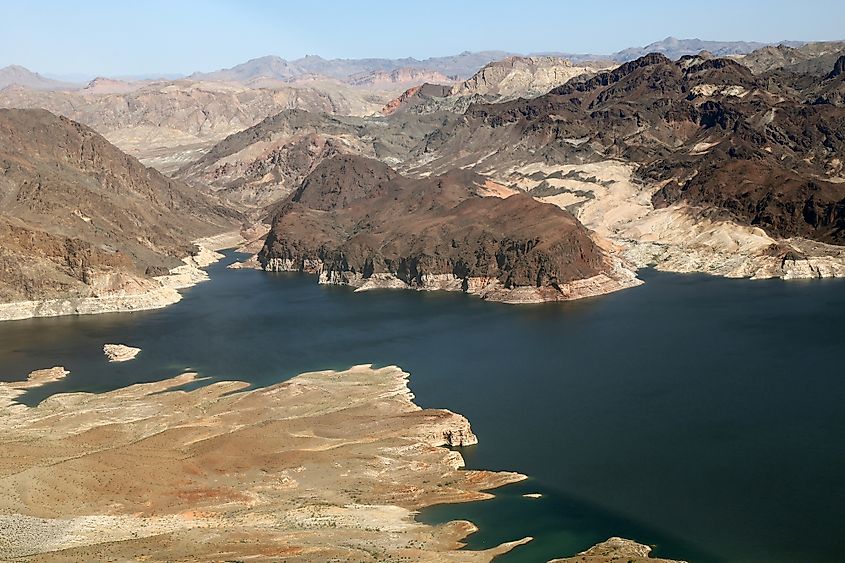
In addition to intensified storms, climate change will result in an increased frequency of other severe weather events such as droughts and heat waves. Such periods of abnormally high air temperature are likely to become much more common in the Southwest. Consequently, as heat waves increase, cold waves decrease in frequency and become much less intense. Moreover, summer temperatures in much of the western and central US are expected to soar over the coming decades, thereby significantly reducing soil moisture and limiting crop yields. Temperatures that would have occurred once every few decades will also become much more commonplace, as they are expected to occur once every two to three years by the end of the century.
Changing Precipitation Patterns
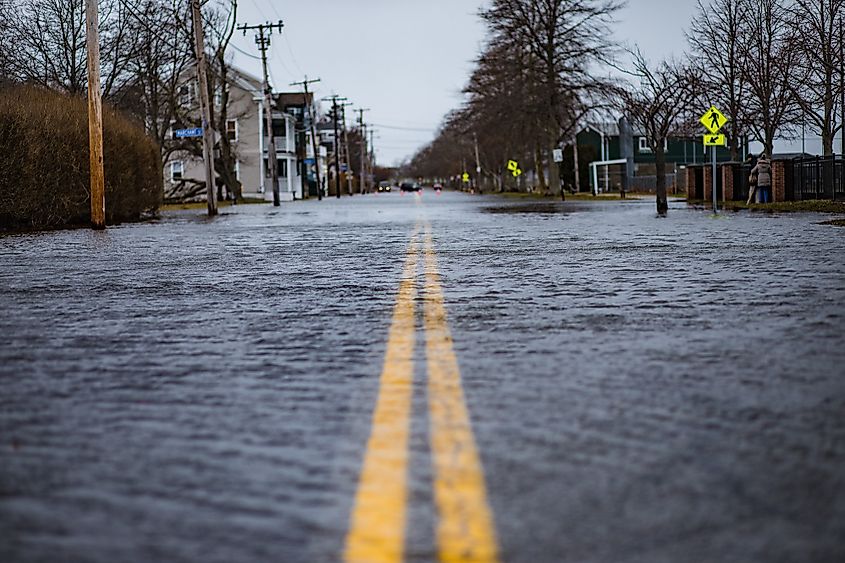
When it comes to climate change, it is of importance to note that not all areas in the US will be affected in the same manner. One such avenue is precipitation patterns. Some areas are expected to witness an increase in precipitation, whereas others might experience an overall decrease. In fact, while the national precipitation average has increased since 1900, different areas have been afflicted in various ways. In the decades to come, the Southwest is expected to have shorter winter and spring. On the other hand, the northern US could witness a prolonged period of these two seasons.
Decreasing Water Supply And Quality
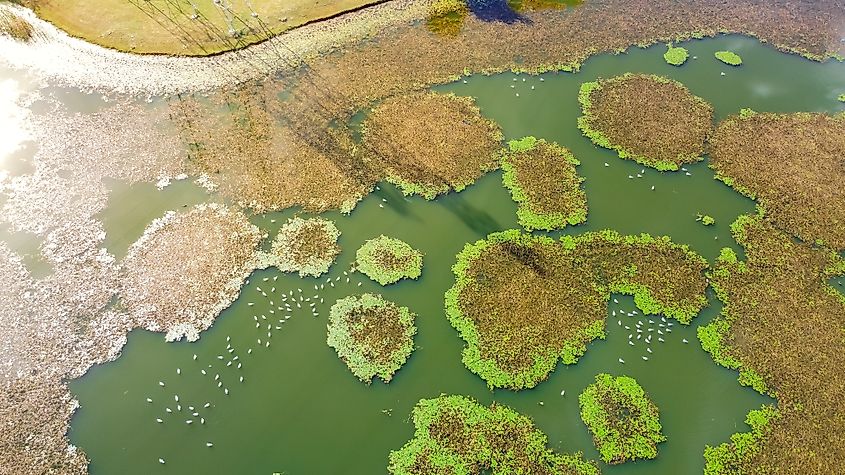
With extreme weather events and heavy precipitation on the rise, it is also expected that water supply and quality across the US will decrease. Such events contaminate water resources, as runoff picks up pollutants and sewage systems overflow and enter freshwater sources. Such contaminated water can potentially cause certain health risks such as Legionnaires' disease, cholera, diarrhea, and other infections. With sea levels rising, saltwater will become much more likely to enter groundwater sources within coastal areas. Moreover, areas subjected to higher levels of droughts and heat waves will also witness more concentrated levels of contaminants in their drinking water, given their overall depleting water supplies.
Aggravating Human Health Risks

Climate change can be associated with a plethora of health risks for the US population. As the temperature rises, people will find themselves at an increased risk for hyperthermia, heat cramps, heat exhaustion, and heat stroke, as the human body may not be able to properly cope with an unusually high temperature. In addition, if a person has been exposed to a significantly high temperature for a prolonged period, their risk of developing diabetes, cardiovascular, kidney, and respiratory diseases is notably exacerbated. Age demographics that are most susceptible to excess heat are children, older adults, and pregnant women, given their vulnerability to heat stress and dehydration.
Another potential health risk to the US population would be the increased risk of asthma and allergy attacks, as warmer temperatures result in a prolonged pollen season. Allergies and lung diseases may also become more common in areas experiencing heavy flooding events, as damp buildings become much more likely to foster the growth of mold. Certain diseases such as malaria, West Nile virus, dengue fever, and chikungunya may also spread to the US as disease-carrying mosquitoes extend their range when temperatures rise.
Surging Home Insurance Costs
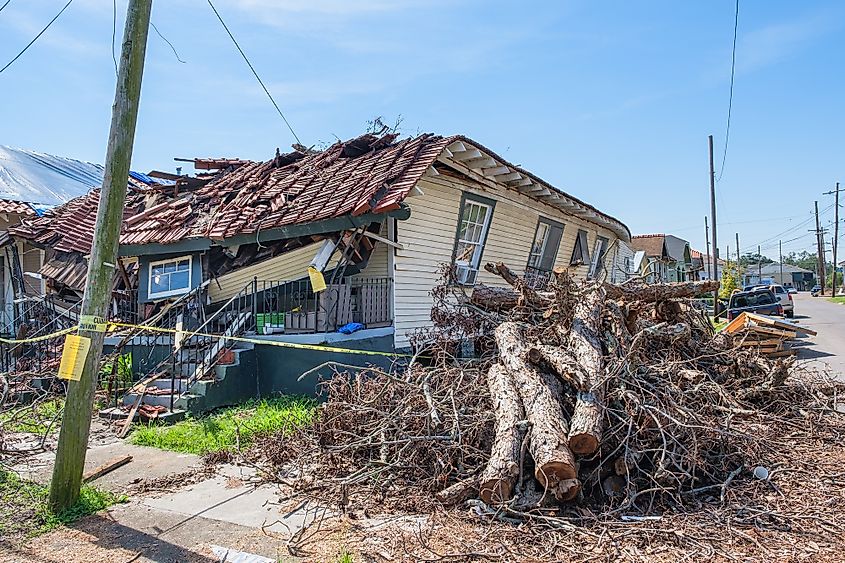
With the increasing number and intensity of severe weather events, home insurance companies find themselves paying out large sums of insurance money to affected homeowners. To offset these costs, these companies have been increasing their premiums over the years, with rates more than doubling within the 2005 to 2015 period. Increases within high-risk areas are likely to become so high that many homeowners would no longer find such options affordable. Given that flooding events are also expected to increase, many homeowners will have to either sign up for the National Flood Insurance Program or invest in private insurance.
Increasing Taxes
In the face of climate change's severe impacts, various municipalities have begun taking action toward making their communities much more resilient to such changes. When considering certain prevention measures, it is important to note that while they may be hugely expensive to implement at first, their long-term benefits outweigh their initial costs. In fact, prevention measures such as hardening infrastructure and the construction of sea walls can actually save substantial amounts of money in the years to come. According to the National Climate Assessment, such measures can reduce coastal property damage from approximately $3.5 trillion down to $800 billion. However, such adaptation and mitigation measures will come at a cost. These projects will likely be funded through "resilience fees" or higher property taxes, which can be unexpected burdens to those communities most afflicted.
Rising Food Costs And Decreasing Variety
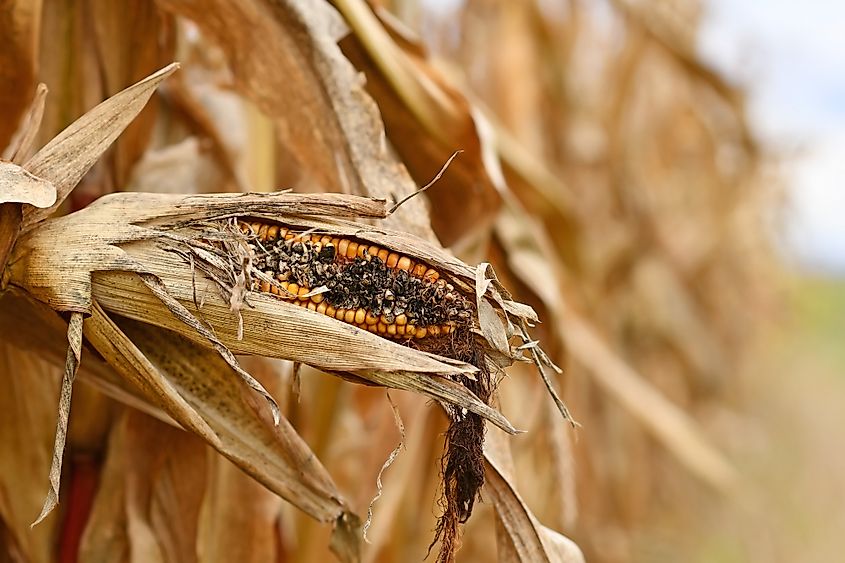
As global warming continues to take place, a trend towards increased food costs and a decrease in overall food variety is expected. According to the United States Department of Agriculture, food prices have increased at an annual rate of 2.6% over the past 20 years. One of the major factors behind such an increase is climate change, as increasing temperatures affect crop and livestock yields, thereby negatively impacting stability and food prices. Rising temperatures also result in an increased spread of pathogens, many of which are detrimental to plant health and may cause them to spoil.
Also of note is the nature of the global food industry, as a significant portion of the US' food commodities is shipped long distances. Extreme climate events in certain regions can cause shortages of a food item and a substantial increase in its price. Another matter of substantial concern is how our crops depend upon insects for pollination. Yet, due to global warming, it is estimated that a whopping 41% of insect species are at risk of extinction. By losing certain insect species, we risk losing the crop varieties these insects pollinate.
Travel Disruptions
Perhaps one of the most unforeseen repercussions of climate change is its effect on the flight of some aircraft. According to a 2015 study, the extreme heat associated with rising temperatures can alter airplanes' takeoff weight. The warmer the air is, the less dense it is and the more difficult it becomes for a plane to attain the necessary lift under its wings for flight. This is one of the reasons why long-distance flights from the Middle East are almost always conducted at night. With temperature rises across the US seeing no end in sight, it is increasingly possible that this same practice could be adopted for internal flights in the US. Another outcome may be that airlines might be forced to leave luggage behind or even bump passengers to ensure an acceptable weight for the flight.

To add on, the previously mentioned risk of flooding can also significantly affect airports, as many are situated upon land at low elevation or close to the coast. Travel disruptions can also occur once in the air, as increasing temperatures can result in stronger winds that would subsequently cause more turbulence. As such, the recreational travel industry as a whole may be disrupted, especially since many of the most popular travel destinations are those that will be most acutely affected by climate change. These include destinations such as Hawaii and Florida's Miami Beach, the latter of which has been recently subjected to toxic algal blooms.
With such looming consequences on the horizon, climate change is an issue that must be given much more significant levels of attention. Although researchers across the globe have come to the consensus that we are past the point of fully reversing climate change, we still can mitigate its future effects and prepare for a much more harmonious existence with nature in the decades to come.











